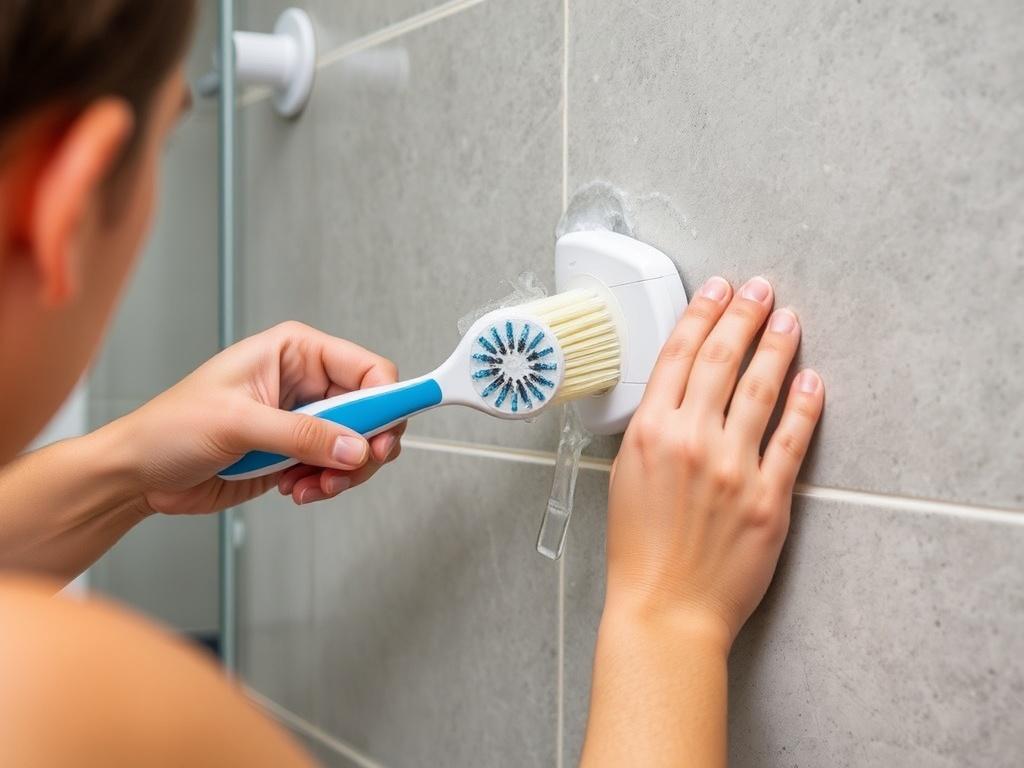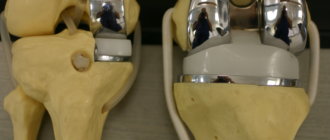Brushing your teeth might seem like a simple daily routine, but are you really doing it right? Proper brushing technique is essential not only for maintaining fresh breath but also for preventing cavities, gum disease, and other oral health problems. Many people rush through their brushing, miss key spots, or use incorrect motions that reduce the effectiveness of cleaning. This article will guide you step-by-step through the proper brushing technique for optimal cleaning, ensuring your smile stays bright and healthy for years to come. We’ll cover everything from the ideal toothbrush and toothpaste to the best angles and strokes to use.
Содержание
- 1 Why Proper Brushing Technique Matters
- 2 Choosing the Right Toothbrush and Toothpaste
- 3 Step-By-Step Guide to Proper Brushing Technique
- 4 Common Mistakes to Avoid for Better Brushing
- 5 Manual vs. Electric Toothbrushes: Which Is Better?
- 6 How Often Should You Brush Your Teeth?
- 7 The Role of Additional Oral Hygiene Practices
- 8 How to Teach Children Proper Brushing Technique
- 9 FAQs About Proper Brushing Technique
- 10 Summary Table: Proper Brushing Technique Tips
- 11 Conclusion
Why Proper Brushing Technique Matters
It’s easy to assume brushing is just about scrubbing your teeth until they feel clean. However, without the right technique, you might be leaving behind plaque, bacteria, and food particles that harm your enamel and gums. Proper brushing removes this unwanted buildup effectively while protecting the delicate tissues inside your mouth.
Ignoring correct brushing technique can lead to several issues:
- Increase in dental plaque, which causes cavities.
- Gum inflammation or gingivitis due to bacteria accumulation.
- Enamel erosion if brushing is too harsh or done incorrectly.
- Persistent bad breath from trapped debris.
Mastering the proper brushing technique gives you control over these risks. You don’t necessarily have to brush harder; brushing smarter and following systematic steps leads to optimal cleaning.
Choosing the Right Toothbrush and Toothpaste
Before we dive into how to brush your teeth properly, let’s briefly discuss the tools you need. The toothbrush and toothpaste you use play crucial roles in the effectiveness of your brushing technique.
Picking the Perfect Toothbrush
Your toothbrush should match your mouth’s needs. Soft-bristled toothbrushes are generally recommended by dentists because they clean well without damaging gums or enamel. Medium or hard bristles can be too abrasive, especially if combined with improper brushing pressure.
Look for the following features in a toothbrush:
| Feature | Why It Matters |
|---|---|
| Soft bristles | Effective plaque removal without harm to gums. |
| Compact head | Easier access to all areas, including back molars. |
| Comfortable handle | Better grip and control for precise movements. |
Choosing the Right Toothpaste
Fluoride toothpaste is essential because it strengthens tooth enamel and helps prevent decay. Some people prefer toothpaste with extra whitening agents, sensitivity protection, or natural ingredients, but the key is to pick one that suits your particular dental needs.
Make sure your toothpaste contains:
- Fluoride for cavity prevention
- Gentle abrasives for polishing
- Safe ingredients without harmful chemicals
Step-By-Step Guide to Proper Brushing Technique
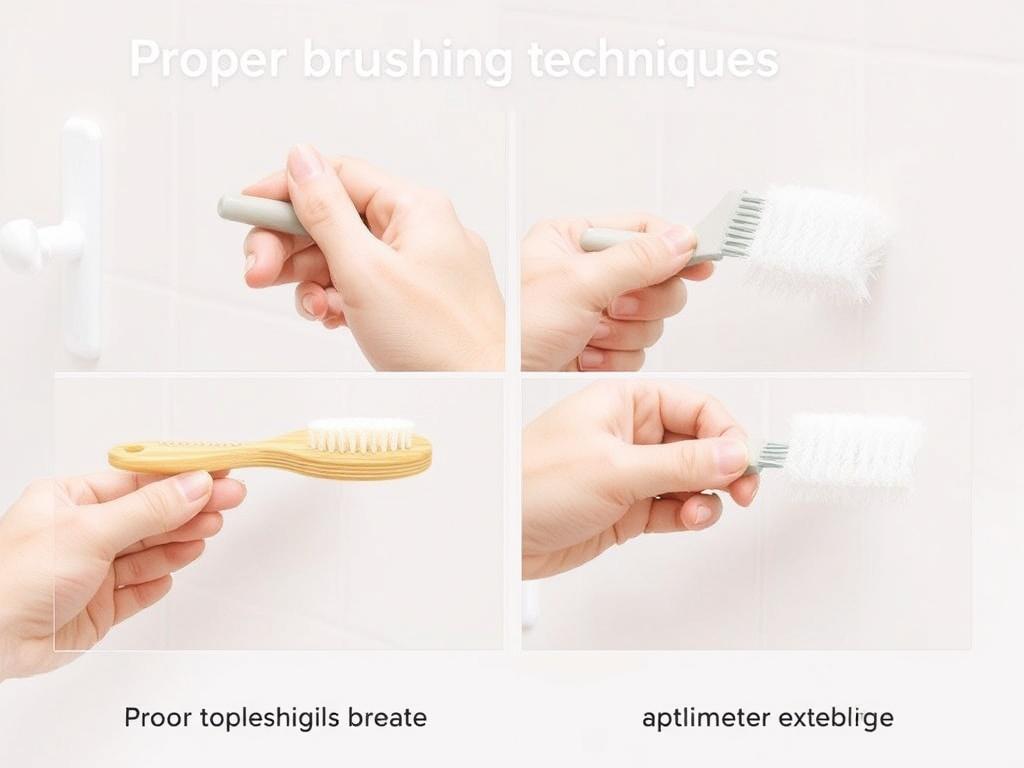
Now let’s get into the heart of the matter – exactly how to brush your teeth using the proper technique for optimal cleaning.
1. Prepare Your Toothbrush
Wet your toothbrush lightly and apply a pea-sized amount of toothpaste. Use only a small amount; excess toothpaste doesn’t increase cleaning power and can lead to unwanted swallowing.
2. Position the Toothbrush Correctly
Hold the toothbrush at a 45-degree angle to your gums. This angle allows the bristles to reach the gum line, where plaque tends to accumulate. Brushing only teeth surfaces leaves behind bacterial buildup along the gums, which can cause problems.
3. Use Gentle, Short Strokes
Instead of scrubbing back and forth vigorously, use gentle, short strokes. Move the brush in a small circular or elliptical motion, covering 2-3 teeth at a time. This motion helps loosen and remove plaque without irritating gums.
4. Brush All Surfaces Thoroughly
Make sure to brush every surface of each tooth:
- Outer surfaces (facing the cheeks and lips)
- Inner surfaces (facing your tongue and palate)
- Chewing surfaces
Each area needs about 10-15 seconds of careful brushing. Don’t rush!
5. Pay Extra Attention to the Gum Line
The gum line is a hotspot for plaque buildup and early gum disease signs. Hold the toothbrush at a 45-degree angle here and gently brush without pressing too hard.
6. Don’t Forget Your Tongue and Roof of the Mouth
Bacteria and odor-causing compounds accumulate on your tongue and the roof of your mouth. Lightly brush these areas to keep your breath fresh and oral cavity clean.
7. Brush for Two Full Minutes
Experts recommend brushing for at least two minutes twice a day. Using a timer or an electric toothbrush with a built-in timer can help you maintain this routine.
8. Rinse Properly
After brushing, spit out the toothpaste but avoid vigorous rinsing with water or mouthwash immediately. Leaving a slight residue of fluoride toothpaste on the teeth maximizes its protective benefits.
Common Mistakes to Avoid for Better Brushing
Even with the best intentions, many people make common mistakes that reduce the effectiveness of their brushing technique.
Brushing Too Hard
Applying too much pressure can wear down enamel and irritate gums, leading to sensitivity and recession. Remember: gentle is best.
Neglecting Certain Areas
It’s easy to miss the back molars, inner teeth, and gum line. Create a mental map of your mouth and systematically cover each zone.
Using a Worn-Out Toothbrush
Frayed bristles reduce cleaning power. Replace your toothbrush or brush head every three months or sooner if you notice wear.
Skipping Brushing at Night
Brushing before bed removes bacteria and food particles accumulated throughout the day. Skipping this step doubles your risk of decay.
Not Flossing
Brushing alone doesn’t reach between your teeth where plaque and food get trapped. Floss daily to complement your brushing technique.
Manual vs. Electric Toothbrushes: Which Is Better?
Choosing between manual and electric toothbrushes is a common question. Both can be effective if used properly, but there are differences to consider.
Advantages of Manual Toothbrushes
- Affordable and easily accessible.
- Allows full control over speed and pressure.
- Simple design with no need for batteries or charging.
Advantages of Electric Toothbrushes
- Built-in timers and pressure sensors promote proper technique.
- Oscillating or sonic action often removes plaque more efficiently.
- Helpful for people with limited dexterity.
If you prefer a manual toothbrush, be mindful of your technique to maximize cleaning. For electric brushes, make sure not to rely solely on the tool; still use proper angles and gentle strokes.
How Often Should You Brush Your Teeth?
Most dental professionals recommend brushing at least twice a day – once in the morning and once before bed. If you can, a third brushing after meals can be beneficial, especially after sugary or acidic foods.
In addition to brushing, regular dental checkups and professional cleanings every six months are critical. Your dentist can recommend personalized techniques or tools if you have special concerns.
Brushing Frequency and Timing Chart
| Time | Recommended Action | Why |
|---|---|---|
| Morning | Brush teeth after breakfast | Removes overnight bacteria and morning breath |
| After Meals | Optional brushing or rinsing | Prevents acid and sugar buildup |
| Night | Brush teeth before bed | Removes bacteria from day and protects during sleep |
The Role of Additional Oral Hygiene Practices
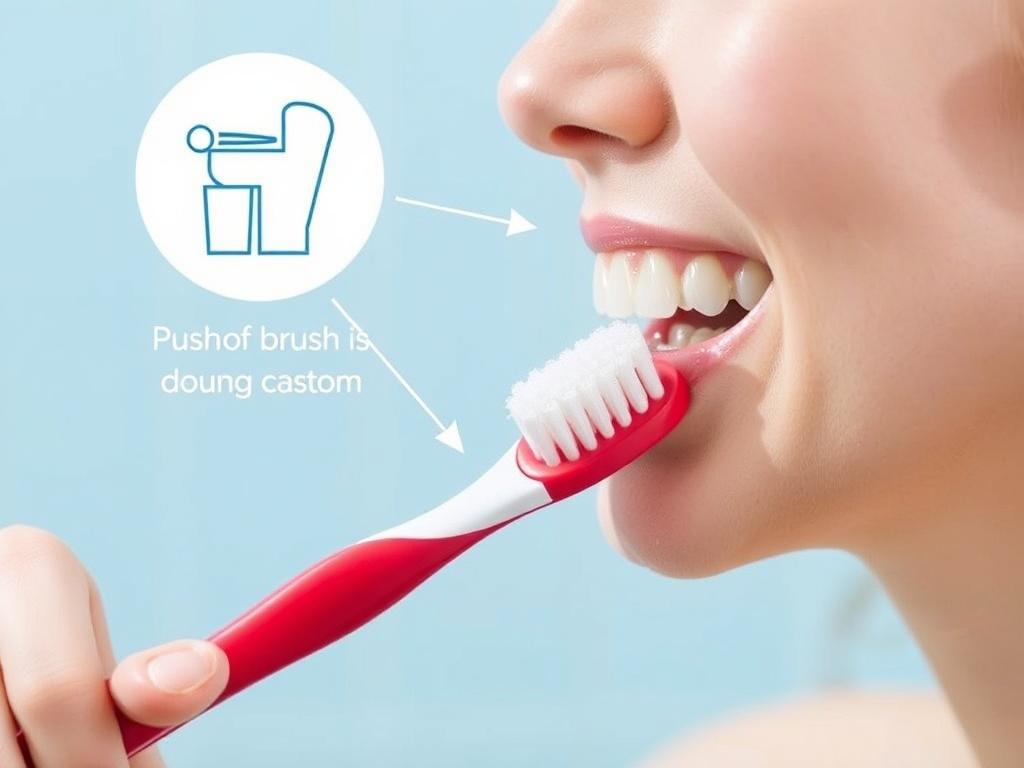
Proper brushing technique is the cornerstone of oral hygiene, but it works best when combined with other habits like flossing, mouthwash use, and tongue cleaning.
Flossing
Daily flossing removes plaque and debris between teeth where brushes can’t reach. It prevents gum inflammation and cavities between teeth.
Mouthwash
Using an antimicrobial or fluoride-containing mouthwash can further reduce bacteria and strengthen teeth. Mouthwash should not replace brushing but be an additional step.
Tongue Cleaning
Gently scrapping or brushing your tongue reduces bad breath-causing bacteria.
How to Teach Children Proper Brushing Technique
Instilling good brushing habits early sets the foundation for lifelong oral health. Children need guidance and supervision until they develop the motor skills for effective brushing.
Tips for teaching children proper brushing technique include:
- Choose a child-sized, soft-bristled toothbrush with fun designs.
- Use a small amount of fluoride toothpaste (pea-sized) appropriate for their age.
- Brush along with them to demonstrate correct angles and strokes.
- Make brushing a fun, consistent routine with songs or timers.
- Teach them to spit but not swallow toothpaste.
- Schedule dental visits by age 1 or as recommended by your pediatric dentist.
FAQs About Proper Brushing Technique
How hard should I brush my teeth?
Brush gently with just enough pressure to feel the bristles against your gums. Too much force can cause damage.
How often should I replace my toothbrush?
Every three months or sooner if the bristles become frayed.
Is it okay to brush immediately after eating?
If you eat acidic foods, wait about 30 minutes before brushing to avoid enamel damage.
Can improper brushing cause gum recession?
Yes, aggressive brushing and improper technique can lead to gum recession.
Should I brush my dentures or retainers the same way?
No, these require special cleaning methods; do not use regular toothpaste as it can be abrasive.
Summary Table: Proper Brushing Technique Tips
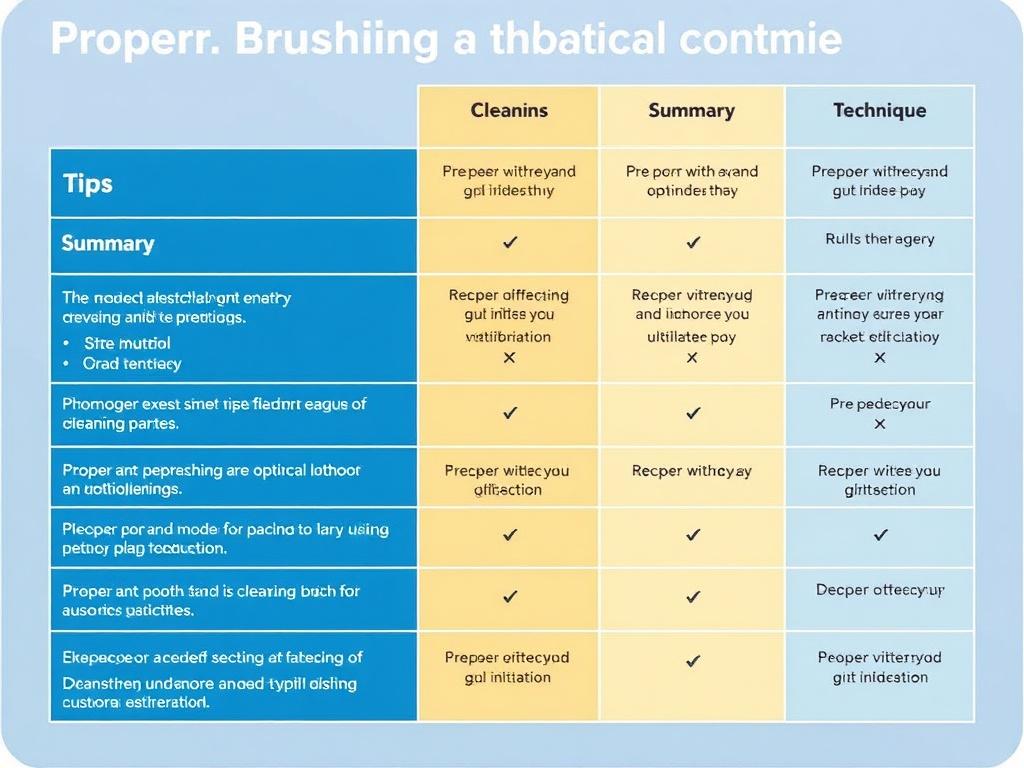
| Tip | Details |
|---|---|
| Use soft-bristled toothbrush | Prevents damage and cleans effectively |
| Apply pea-sized toothpaste | Enough fluoride without excess foam |
| 45-degree angle to gum line | Targets plaque on gums and teeth junction |
| Gentle, short strokes | Circles or elliptical motions for thorough cleaning |
| Brush all surfaces | Outer, inner, and chewing areas |
| Brush tongue gently | Reduces bacteria and freshens breath |
| Brush for two minutes | Ensures complete cleaning |
| Replace toothbrush regularly | Maintain effectiveness and hygiene |
Conclusion
Brushing your teeth might be a routine task, but mastering the proper brushing technique transforms it into a powerful defense against dental problems. By choosing the right toothbrush, adopting the recommended motions, and brushing all surfaces carefully for the right amount of time, you optimize your oral hygiene and set yourself up for a radiant smile and healthy gums. Remember, gentle and thorough brushing—combined with flossing and regular dental checkups—is the best strategy to keep your mouth clean and your smile shining. Take the time to learn and practice these steps; your teeth will thank you for it every day!

